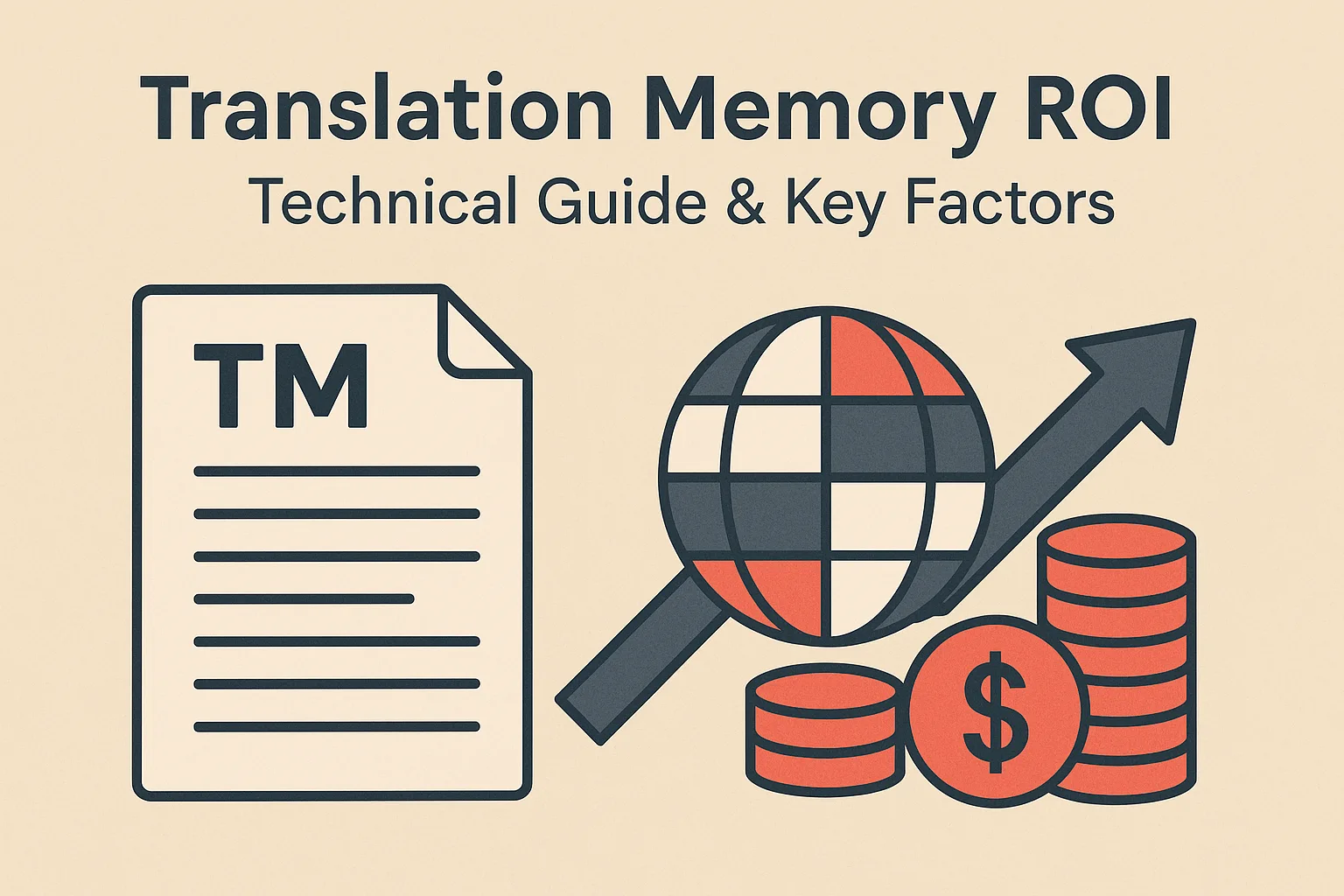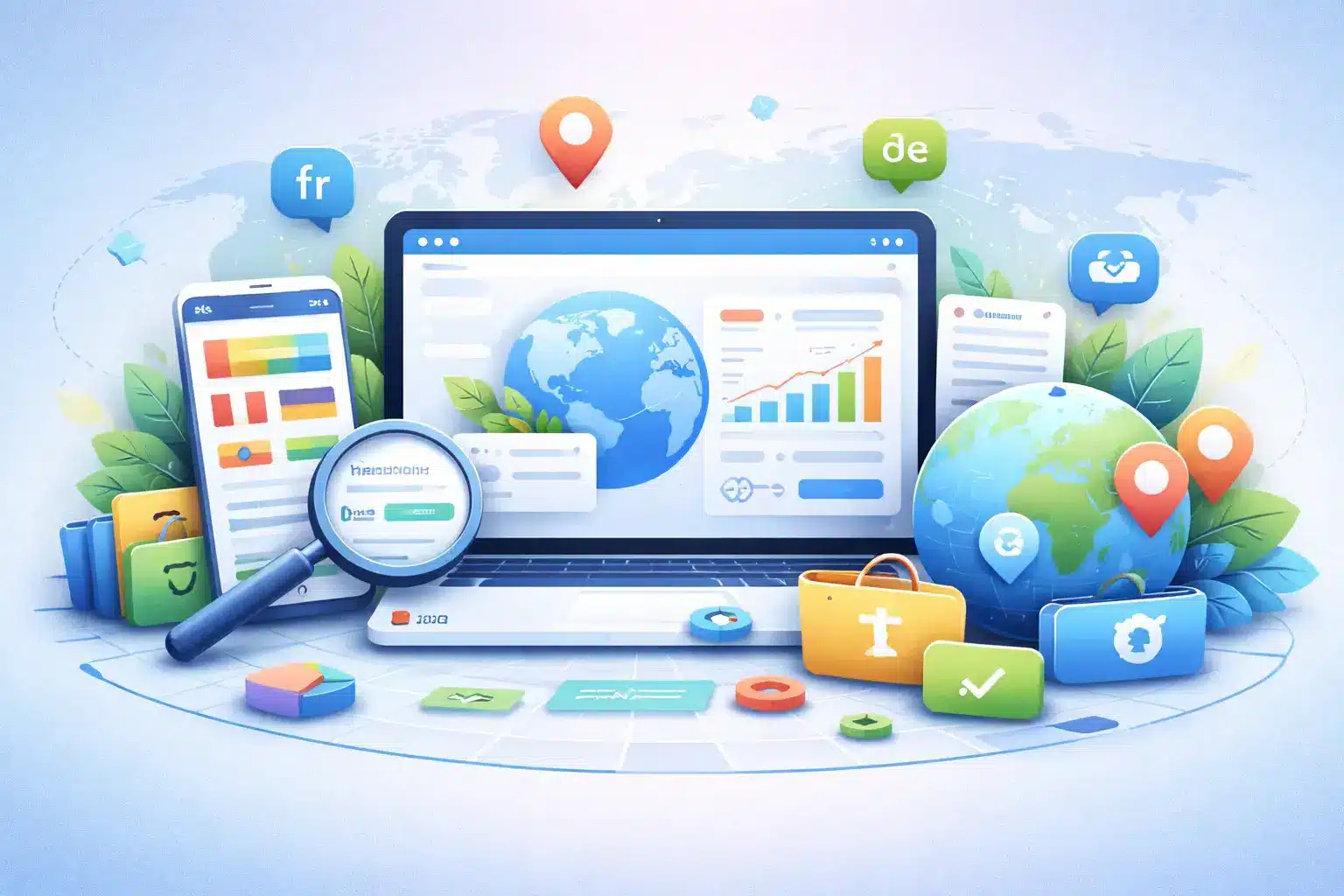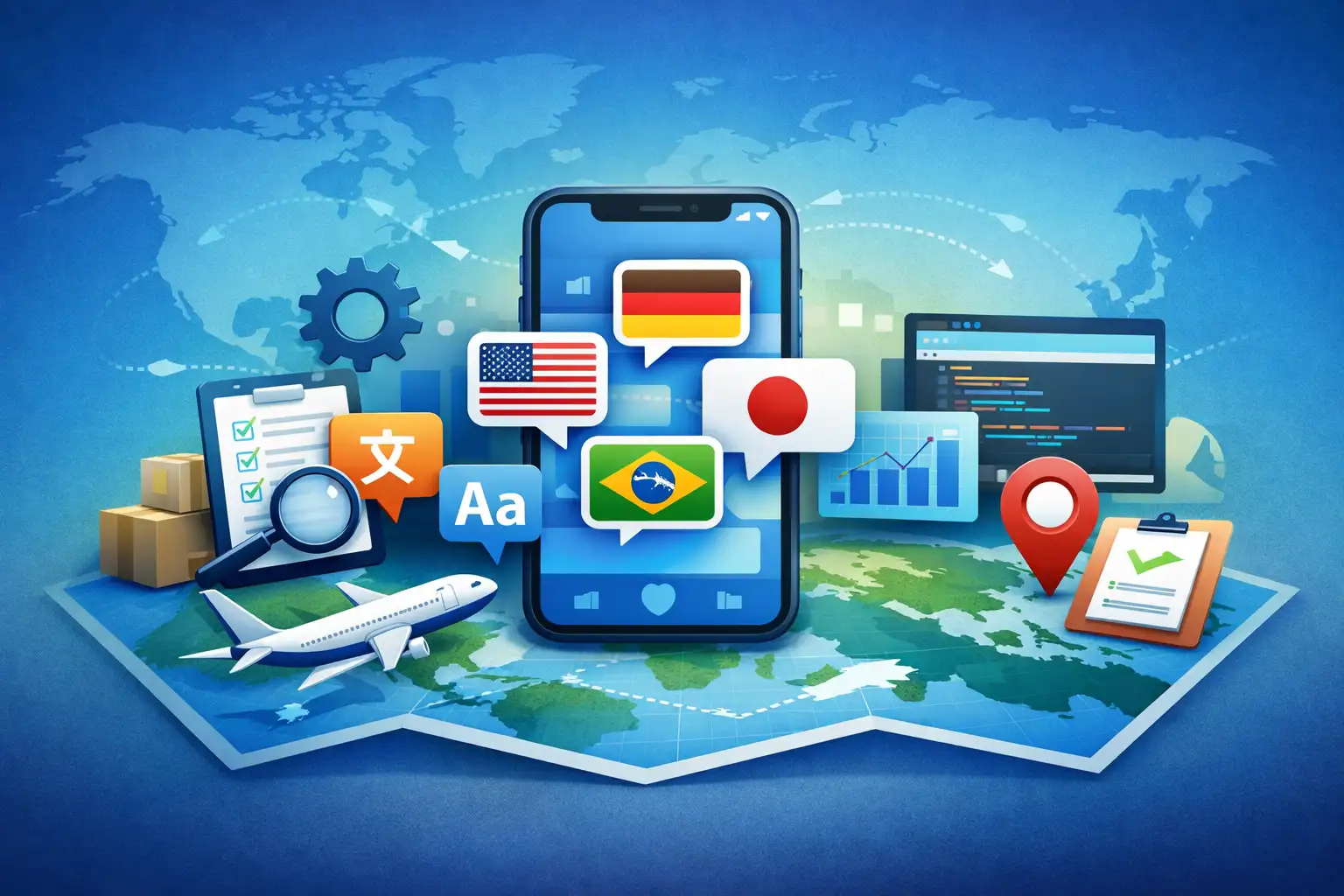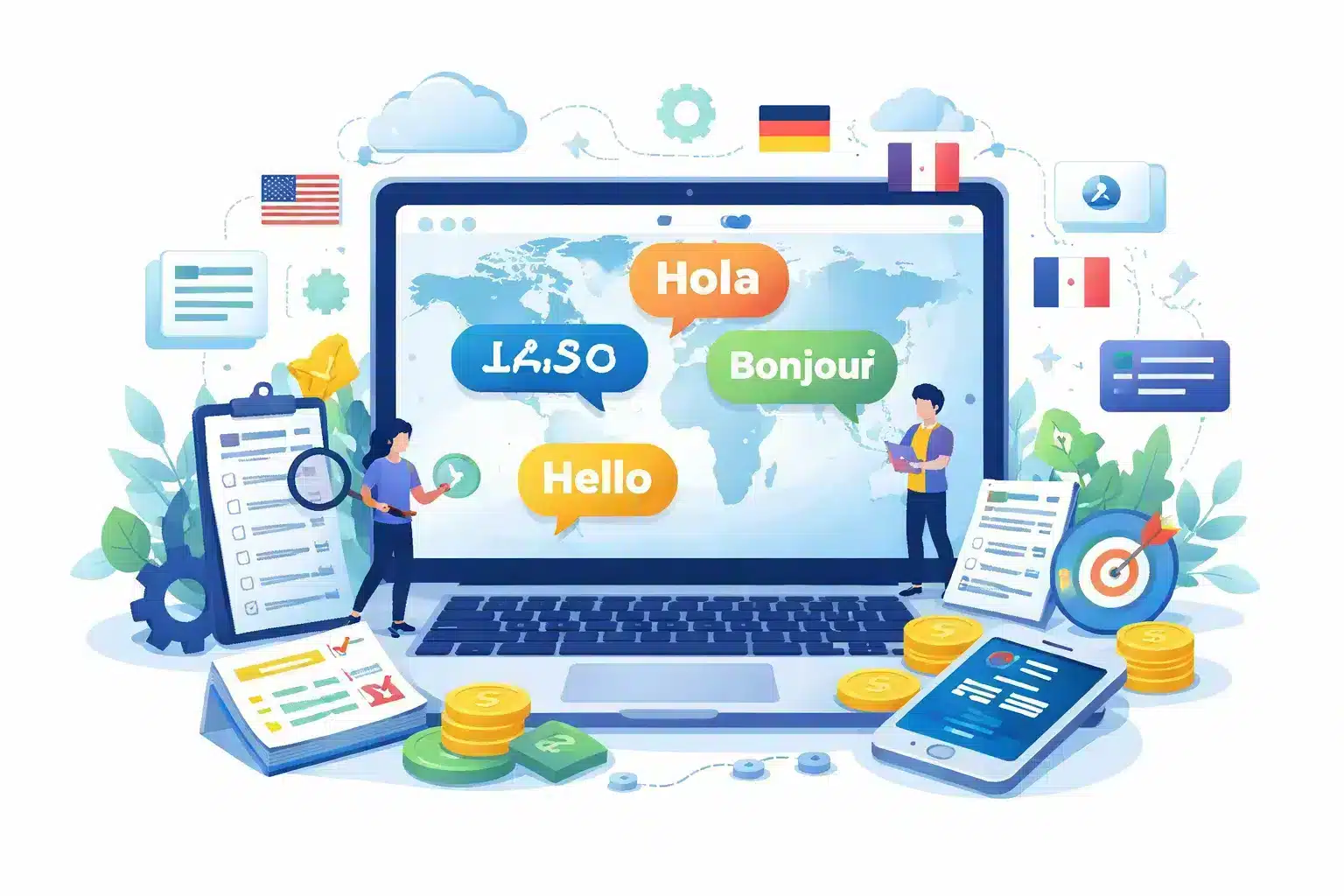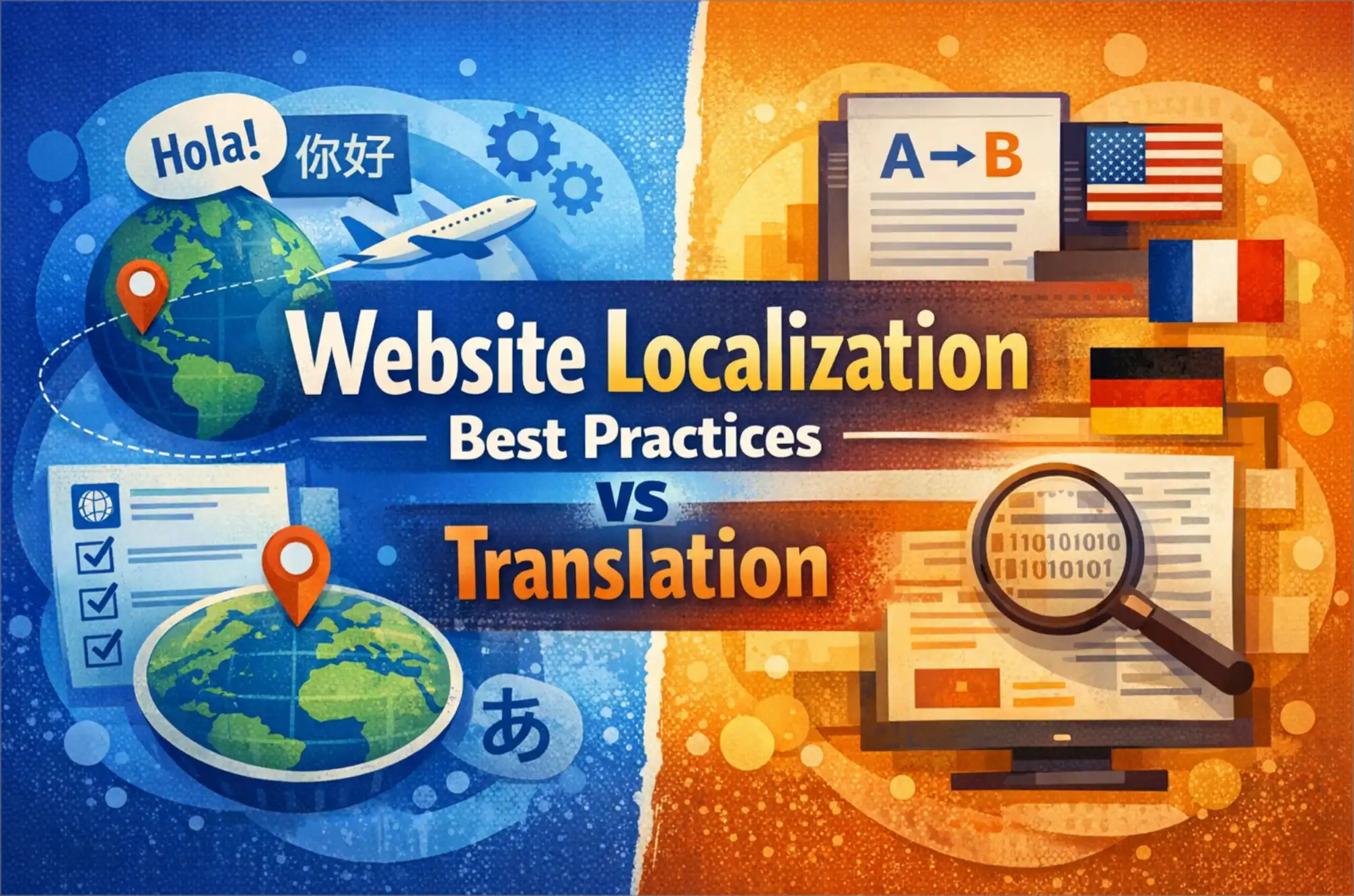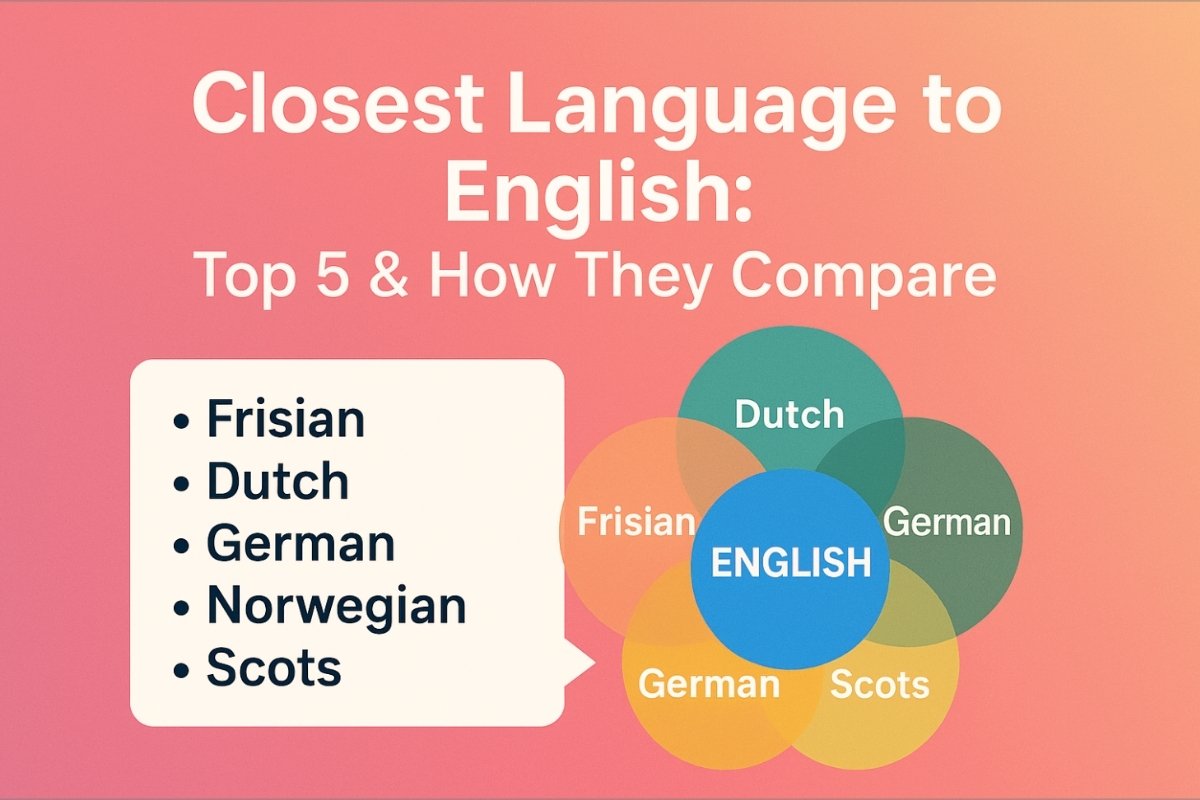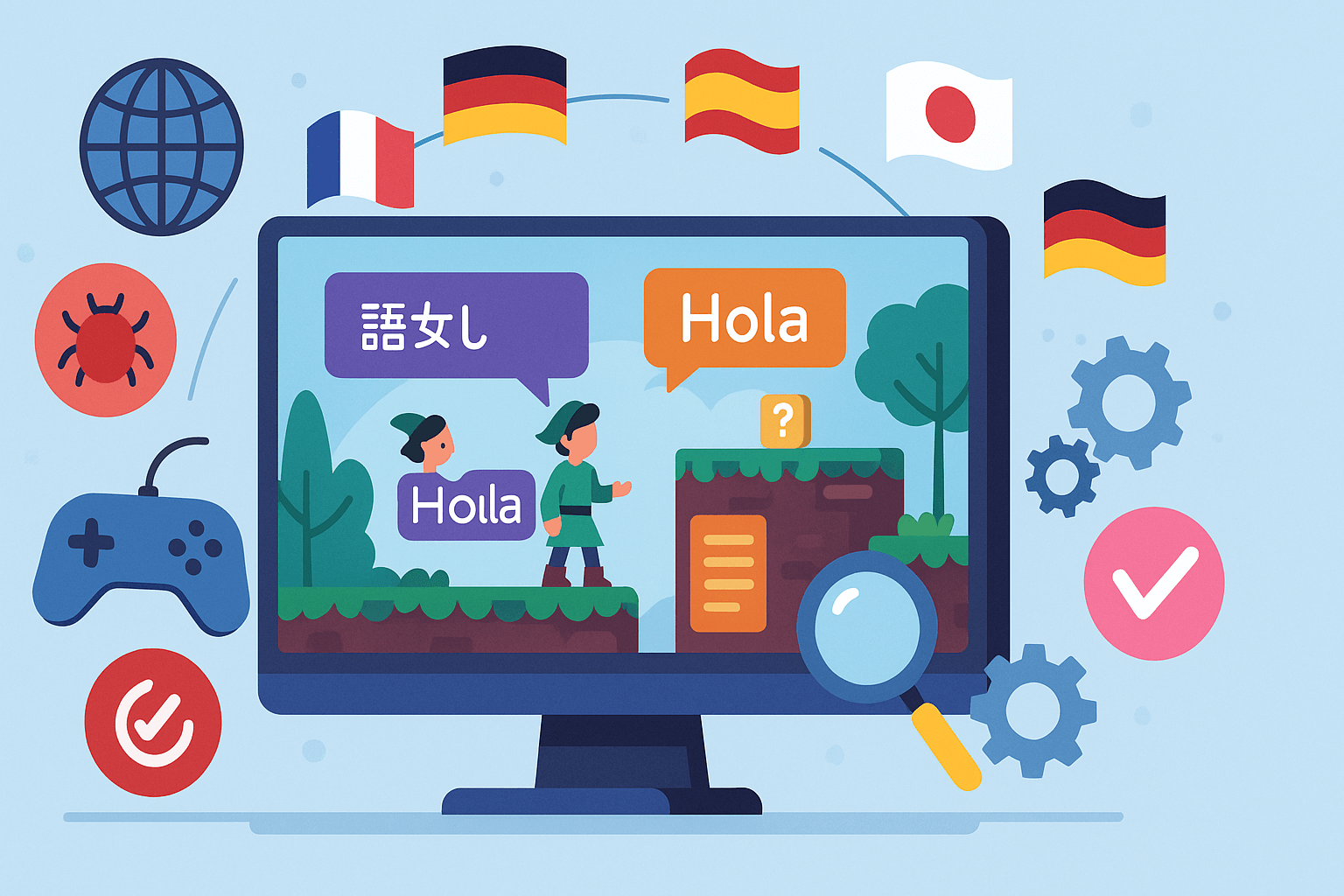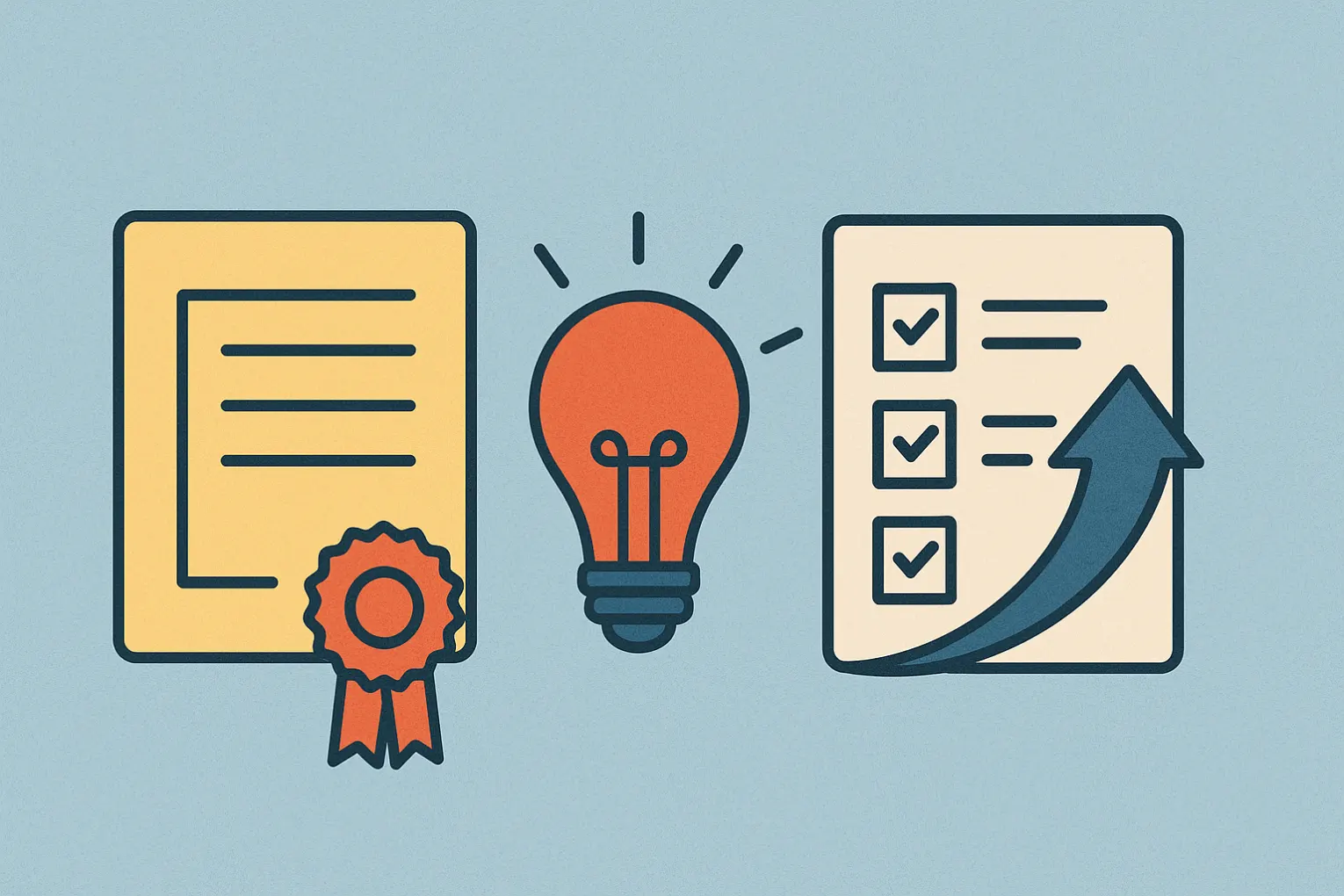For global organizations producing large volumes of technical documentation, training content, or product updates, one of the most effective levers for reducing costs and accelerating release cycles is Translation Memory (TM).
Unlike machine translation or ad-hoc translation efforts, TM leverages a structured database of previously approved human translations. By reusing validated content, it reduces redundant work, improves quality consistency, and accelerates time-to-market.
The result is measurable ROI across cost savings, quality assurance, and speed of delivery, all critical factors for localization leaders, documentation managers, and procurement professionals.
This guide explains what TM is, how it works, the factors that shape ROI, and gives you a clear roadmap with tips and a sample model you can adapt.
What is Translation Memory (TM) and How Does It Generate ROI?
A Translation Memory (TM) is a linguistic database that stores source segments (usually sentences, phrases, or strings) alongside their approved target-language equivalents. Every time content is translated, the system saves these pairs in a structured way, creating an ever-growing resource that can be reused in future projects.
When new content is sent for localization, a Computer-Assisted Translation (CAT) tool or a Translation Management System (TMS) automatically checks each segment against the TM. If an identical or similar segment already exists, the system proposes it to the translator, cutting down the amount of text that needs to be translated from scratch.
This mechanism makes TM one of the key drivers for Technical Translation Memory ROI, especially in industries with repetitive documentation such as manufacturing, software, medical devices, and financial services.
How TM Generates ROI: The Mechanics
Translation Memory (TM) creates savings by reducing repeated work and ensuring consistency across projects. Instead of retranslating the same content, translators can reuse, adapt, or validate previous work. This saves time, reduces costs, and improves quality.
Here’s how the main TM mechanisms work:
- Segment Reuse (100% Matches)
If a sentence has already been translated and approved, the TM retrieves it instantly. Translators only validate, not retranslate.
Example:
“Ensure device is switched off before cleaning” → reused across multiple manuals.
- In-Context Exact (ICE) Matches
TM checks the surrounding context, rather than just checking sentences.
If the same string appears in the same place (e.g., a warning label in a safety manual), translators can rely on it with very little risk.
This reduces both translation and QA costs because the segment is effectively “pre-validated.”
- Fuzzy Matching
Even if a sentence isn’t identical, TM highlights partial overlaps.
Example:
- Stored TM: “Press the red button to start recording.”
- New sentence: “Press the green button to start recording.”
The translator edits only the changed word instead of rewriting the whole line.
Depending on the fuzzy band (e.g., 95–99%, 85–94%), the editing effort is reduced significantly.
- Concordance Search
Linguists can search the TM for individual terms or phrases.
This ensures consistency in technical terminology (such as “torque wrench” vs. “spanner torque”), which prevents errors in critical documentation.
- Sub-Segment Leverage
TM can recognize fragments such as product names, units of measurement, or regulatory phrases.
Even when full sentences are new, these smaller fragments reduce translator effort and ensure consistency.
Example: Chemical safety data sheets (SDS) often reuse the same hazard statements across products.
Why TM is Not the Same as Machine Translation (MT)
It’s essential to clarify the difference between Translation Memory (TM) and Machine Translation (MT):
- TM: Stores and reuses human-approved content. It ensures consistency and accuracy across projects.
- MT: Uses algorithms to predict new translations. Fast, but not inherently reliable without human post-editing.
Many enterprises achieve maximum ROI by combining the two. TM handles reuse of validated content; MT + Post-Editing (MTPE) speeds up new or low-risk content.
Commercial Value of TM (Why Procurement Teams Care)
TM is now a core requirement for enterprise buyers, as procurement and localization managers value its impact on cost, quality, speed, and compliance.
And here’s why;
- Direct Cost Savings: Reduced “net-new” words mean lower per-project spend.
- Higher Quality & Consistency: Eliminates terminology drift, a significant issue in regulated industries.
- Faster Time-to-Market: Less rework accelerates release schedules, allowing earlier revenue capture.
- Scalability Across Languages: ROI grows as more languages and projects are added.
- Auditability: TM provides a traceable history of approved content, which supports compliance audits in industries like finance, medical, and aerospace.
When implemented properly, Translation Memory is a strategic asset that drives measurable Technical Translation Memory ROI across cost, speed, and quality dimensions.
TM Match Types (100%/ICE, Fuzzy Bands) and Why They Matter for Cost
The financial return on Translation Memory (TM) is driven by how new content aligns with previously translated segments.
CAT tools and TMS platforms categorize these alignments into “match types.” Each type reflects how much editing a linguist must perform and, by extension, how much cost and time can be saved.
Core Match Categories and Their ROI Impact:
| Match Type | Definition | Effort Required | Example ROI Impact |
| 100% Match | Source segment matches a stored segment exactly. | Minimal (spot-check only). | High savings: translator validates, not rewrites. |
| ICE (In-Context Exact) | 100% match with identical context (e.g., same place in a manual). | Very low effort; QA check only. | Strongest savings: considered “safe” in many workflows. |
| Fuzzy 95–99% | Almost identical; one or two words differ. | Minor edits (adjective changes, numbers, small updates). | Moderate savings: e.g., 1–2 mins per segment. |
| Fuzzy 85–94% | Partial similarity with structural differences. | Medium edits (rephrasing). | Lower savings, but faster than new. |
| Fuzzy 75–84% | General resemblance; different word order/context. | Significant edits (almost rewriting). | Marginal savings. |
| New Segment | No match in TM. | Full translation required. | Baseline cost (highest). |
Why Match Categories Matter for ROI
Translation Memory (TM) segments are rated by “match categories,” which affect both cost and productivity.
Understanding these categories helps procurement teams plan budgets, forecast ROI, and negotiate vendor contracts more effectively.
Key Considerations:
- Procurement Planning:
Vendors typically quote per word but apply different leverage rates to each match band. For example:
- 100%/ICE = charged at 10–30% of the new word cost.
- 95–99% = 30–50%.
- 85–94% = 60–70%.
- 75–84% = 80–90%.
- Productivity Assumptions:
Translators can process more words/hour when fuzzy or exact matches are present. For instance, they may translate 2,000 net-new words/day, but validate 6,000–8,000 words/day if they’re mostly 100%/ICE matches.
- Quality Considerations:
The lower the match percentage, the higher the risk of terminology drift or style inconsistencies. Even with fuzzy matches, a terminology-approved glossary and LQA process are critical.
- Forecasting ROI:
By analyzing your content against a TM, procurement can model future costs. For example, a 50,000-word manual might break down into:
- 20% 100%/ICE (10,000 words at 20% cost)
- 30% fuzzy 85–99 (15,000 words at 40–60% cost)
- 50% new (25,000 words at 100% cost)
This tiered structure enables teams to build accurate cost models, evaluate vendor pricing, and forecast ROI over multiple releases.
However, not all “savings” are equal. 100%/ICE matches deliver the biggest ROI, while fuzzy matches still reduce effort but require more QA. Effective TM governance and terminology discipline ensure these savings don’t come at the expense of quality.
TM vs MT: Where Each Fits
Understanding the core differences between TM, and MT is crucial, as despite being similar has very different use cases.
- Translation Memory (TM):
Relies on previously validated human translations. It guarantees consistency with prior projects.
- Machine Translation (MT):
Uses AI to predict new translations. Fast, but requires post-editing and carries accuracy risks.
Both TM and MT have their advantages and drawbacks, but each is a powerful tool in its own right. For low-risk content (e.g., FAQs, internal documents), combining TM with MTPE (Machine Translation Post-Editing) maximizes efficiency, while human-only workflows should be reserved for regulated, legal, or customer-facing materials. This combined approach yields optimal ROI.
How to Calculate Translation Memory ROI (with Formulas & Examples)
Procurement teams often ask: “How do I prove TM’s value on paper?”
The answer lies in cost and time formulas.
ROI formula (cost lens):
ROI(%)=Baseline Cost – Cost with TMInvestment100
Where:
- Baseline = Translation cost if all words were new.
- With TM = Actual cost after match leverage.
- Investment = TM implementation + maintenance cost.
Worked Example (50,000 words):
- 10,000 new words @ $0.20 = $2,000
- 5,000 words @ 95–99% fuzzy ($0.08) = $400
- 5,000 words @ 85–94% fuzzy ($0.12) = $600
- 3,000 words @ 100% matches ($0.02) = $60
- Total with TM = $3,060 vs $10,000 baseline → ~70% cost avoidance
Time ROI formula:
Time Saved(%)=Baseline Hours-Hours with TMBaseline Hours100
If translators process ~2,000 new words/day, fuzzy and exact matches can push productivity up to 4,000–6,000 words/day.
What Savings Are Typical Over Multiple Releases?
Properly maintained TMs let teams reuse content across releases, gradually boosting efficiency, reducing costs, and accelerating turnaround.
Here’s what benchmarks from the industry show for recurring content like technical manuals, software updates, or compliance documents:
- First release: 10–20% savings.
- Second release: 20–35% savings (thanks to iterative reuse).
- Multiple cycles: 30–50% savings, especially for technical manuals, software updates, or recurring compliance documents.
These ranges are directional, based on industry benchmarks (for example, SimulTrans, RWS).
Time-to-Market ROI: How TM Accelerates Releases
In localization, time is often just as valuable as cost savings.
Translation Memory (TM) directly reduces turnaround times, helping businesses launch products and content in multiple markets faster and start generating revenue earlier.
3 Core Ways TM Speeds Up Localization
- Smaller net-new workload:
With every release, a growing portion of content comes from TM.
Instead of retranslating repeated UI strings or product descriptions, linguists validate matches. This cuts the effective word count and shortens project cycles.
- Less QA rework:
Because matches come from previously approved translations, consistency is already validated.
Reviewers spend less time correcting terminology or style, reducing bottlenecks in proofreading and LQA.
- Faster multi-language rollouts:
Once a segment is translated in one market, it can be leveraged across related locales.
For example, Spanish (LATAM) content can accelerate Spanish (Spain) localization with minor edits, rather than full retranslation.
Practical Example: Release Acceleration
Imagine a 10,000-word software update:
- Without TM leverage, a translator working at ~2,000 words/day would take 5 full days for one language.
- With 40% TM matches, the net-new workload drops to 6,000 words. At the same throughput, that’s three working days, plus ~1 day of review = release in 4 days instead of 5–6.
- Multiply this across 5–10 languages, and you can save a full week of global release lag, aligning international launches.
Business Impact of Faster Releases
A well-maintained TM compresses release cycles, letting companies ship faster, localize more consistently, and capture market opportunities earlier.
This drives ROI through:
- Revenue acceleration: Products reach international buyers sooner.
- Regulatory compliance: Faster localization avoids delays in industries like finance, healthcare, or software, where updates must be live globally.
- Customer experience: Global users get updates simultaneously, avoiding “second-tier” treatment that hurts engagement.
Key Factors that Change TM ROI (the Controllables)
Not every organization will see identical ROI. Several controllable factors influence how much time, cost, and effort can actually be saved. Understanding these variables helps teams optimize TM use, boost savings, and avoid surprises.
Here are a few examples:
- Content repetitiveness: Higher reuse = higher ROI.
- Update frequency: Frequent releases compound leverage.
- Languages: More locales amplify ROI gains.
- Terminology discipline: Consistent term usage boosts fuzzy match rates.
- Tooling (TMS/CAT): Connector support (CMS, Git, Figma) ensures seamless reuse.
- File formats: Authoring in XML, Markdown, or IDML avoids engineering overhead.
- Reviewer process: QA maturity directly impacts usable leverage.
- TM hygiene: Regular audits, deduplication, and governance maximize accuracy.
TM Hygiene: Governance, Deduplication & ICE Risk
A Translation Memory (TM) is only as valuable as the quality of the data it contains. Without proper governance, even high match rates can introduce hidden costs, errors, and rework.
Poor TM hygiene is one of the most common reasons why ROI projections fall short.
Key Risks of Poorly Managed TM:
- Propagated errors:
If a faulty translation is stored as a 100% or In-Context Exact (ICE) match, it can automatically populate across dozens of files, creating widespread inconsistencies that reviewers must later fix.
- Conflicting entries:
Multiple translations for the same term (e.g., “log in” vs. “sign in”) cause noise in the CAT tool, slowing linguists and lowering confidence in the resource.
- Bloat & inefficiency:
Over time, unused or duplicate entries accumulate, making TM searches slower and less effective. This reduces translator productivity and increases QA overhead.
- False security with ICE matches:
ICE matches are assumed “safe,” but context can change subtly between product versions. Without sampling, these matches may slip through unchecked, leading to release-critical defects.
Best Practices for TM Hygiene:
- Assign a TM owner:
Define responsibility for updates, audits, and approvals. This prevents the “everyone edits, no one owns” problem.
- Run quarterly audits:
Review for outdated entries, brand voice changes, or retired products. Use automated QA tools to flag anomalies.
- Deduplicate and normalize:
Consolidate conflicting translations, enforce preferred terms, and remove legacy segments that no longer apply.
- Apply LQA sampling even for 100% matches:
Randomly audit ICE matches to ensure context validity. This prevents error propagation and safeguards high-stakes content.
- Document governance rules:
Define naming conventions, update cadence, and rules for what gets stored (e.g., exclude draft or MT-only segments).
The ROI Angle
Clean, governed TMs increase leverage, reduce editing time, and build translator trust.
A “dirty TM,” by contrast, erodes confidence and drives reviewers back to rechecking everything, eliminating the efficiency gains that make TM profitable in the first place.
Treat TM as a living asset with governance and audits, not a static archive. A clean TM compounds value release after release.
Terminology & Style Guides: Compounding Returns
While Translation Memory (TM) captures past segments, its effectiveness multiplies when paired with glossaries and style guides.
These governance tools establish the rules for handling terms and tone consistently across all content, converting partial matches into higher-quality leverage and reducing downstream editing effort.
Why Terminology Matters
- Consistency across products and markets:
A glossary ensures that critical terms (e.g., “dashboard,” “encryption key,” “compliance report”) are always translated the same way.
This prevents re-work when fuzzy matches show up with slightly different wording.
- Brand integrity:
Product names, slogans, and UI strings are locked in so that every market sees the same identity.
- Fewer disputes:
Clear rules minimize back-and-forth between translators, reviewers, and product teams.
The Role of Style Guides
Style guides directly influence localization by making the users feel familiar and amp up the trust value of the brand. They ensure content feels natural to local audiences, while cutting back on rework and QA cycles.
Here’s what to look for:
- Tone and formality:
Determine whether to use formal “usted” vs. informal “tú” in Spanish or “Sie” vs. “du” in German, based on the target audience.
- Regional variants:
Clarify whether to prioritize Brazilian vs. European Portuguese, Simplified vs. Traditional Chinese, or US vs. UK English.
- Formatting norms:
Date formats, decimal separators, and measurement units are documented in advance, reducing QA fixes.
The ROI Connection
Terminology and style guides improve quality, sure. But they also influence ROI directly by speeding up the process reliably and shrinking review cycles.
- Improved fuzzy matches:
When a style guide and glossary are enforced, fuzzy matches (e.g., 85–94%) often require only minimal edits, moving them closer to the cost/time profile of higher-band matches.
- Reduced reviewer edits:
Clear term ownership and stylistic direction shorten review cycles and prevent “preference edits.”
- Compounding benefits over time:
Every release adds more consistent, higher-quality content to the TM, raising match leverage in future projects.
Procurement Best Practice
When shopping for professional localization services as an enterprise buyer, you need to be very specific about what you need. Asking specific questions helps you to cut through the noise
When evaluating vendors, request evidence of:
- A governed termbase integrated with the TM.
- Style guide samples tailored to your industry (finance, healthcare, SaaS).
- Defined update cadence (e.g., quarterly reviews of termbase + TM).
Remember, TM + Glossary + Style Guide = exponential ROI. Alone, TM captures reuse. With governance, it delivers compounding efficiency, quality, and speed.
File Formats & Engineering: Where DTP Impacts ROI
The format your content is authored in directly affects how much of your TM leverage you can actually realize. In short, the more translation-ready your files are, the more ROI you’ll capture from TM.
On the flip side, engineering complexity can erode TM benefits.
Here’s what to keep in mind:
- Editable formats (XML, IDML, DOCX, Markdown) → higher leverage.
- Non-editable (PDF scans, images) → expensive preprocessing.
- Complex layouts (RTL, CJK, DITA/XML) → require extra DTP passes.
Standardize source formats and provide packaged assets (fonts, links). This will make the process a lot smoother, all while reducing errors.
Implementation: From Zero to Positive TM ROI
For organizations that are new to Translation Memory (TM), the path to measurable ROI requires a structured rollout.
However, for this to work, you need to treat TM not as a one-time setup, but as a staged process that matures alongside your localization program.
Here’s how to go from zero to compounding returns:
1. Audit Existing Content
- Map volumes: Identify the largest repositories of content (manuals, knowledge bases, UI strings, marketing copy).
- Prioritize by repetitiveness: Start with content types that repeat often (technical manuals, product updates, release notes).
- Assess formats: Collect files in Word, XML, InDesign, or other editable formats to avoid costly conversions later.
Output: A master inventory by language, file type, and volume.
2. Import Legacy Translations
- Align past bilingual files (DOCX, Excel, XLIFF, PO) into a unified TMX file.
- Where no bilingual source exists, run an alignment project (tools match source and target segments manually or semi-automatically).
- This “bootstraps” your TM with usable data from day one.
Output: A populated TM that immediately delivers leverage.
3. Define Segmentation Rules
- Establish how sentences are broken into segments (periods, bullet points, placeholders, code variables).
- Ensure consistency across CAT/TMS environments to prevent fragment mismatches.
- Add rules for non-standard content (e.g., “v2.0” shouldn’t split at the period).
Output: TM-ready content that maximizes reuse.
4. Build Glossary & Style Guide
- Launch a governed termbase with critical terms, product names, and do-not-translate items.
- Draft a style guide defining tone, formality, and formatting conventions.
- Distribute these to linguists so that early projects reinforce consistency.
Output: Governance assets that compound TM effectiveness.
5. Run a Pilot Project
- Choose 1–2 priority locales and run TM on 1–2 product releases.
- Measure savings by comparing leveraged vs. net-new words, edit-distance, and review cycles.
- Use pilot findings to refine segmentation, glossary, and TM governance.
Output: A benchmark ROI case you can present internally.
6. Scale & Automate
- Roll out TM-enabled workflows across all supported locales.
- Connect CMS, Git, design tools, or support portals via TMS connectors to automate content flow.
- Schedule quarterly audits to maintain TM hygiene and protect ROI.
Output: Continuous localization with measurable savings across releases.
Tooling Checklist (What to Look for in TMS/CAT)
Here’s a table highlighting the features and the reasoning behind each:
| Feature | Why It Matters for ROI |
| Robust TM management (multi-TM, sub-segment leverage) | Maximizes reuse, prevents duplication, and improves match rates. |
| Fuzzy/ICE analysis | Provides transparent cost models; helps procurement negotiate leverage discounts. |
| LQA integration (MQM/DQF) | Ensures quality scales with volume; reduces costly rework and reviewer cycles. |
| Analytics dashboard | Tracks savings, throughput, and quality KPIs—proving TM value over time. |
| Connectors (CMS, Git, Jira, Figma) | Eliminates copy-paste and engineering overhead; accelerates release cycles. |
| Permissions & audit logs | Maintains compliance and accountability, reducing audit risk in regulated industries. |
Analytics: Measuring TM ROI with the Right Metrics
Think of TM as a financial asset— value needs to be measured and reported.
The most effective KPIs include:
- New vs. leveraged words → tracks how much content is being reused.
- Edit-distance % → shows how much effort fuzzy matches still require.
- Error rates (MQM/DQF) → measure quality and consistency across releases.
- Cycle time → days from project start to delivery.
- On-time delivery % → ensures schedules stay predictable.
- Content velocity → total words processed per month.
By consolidating these metrics into a monthly ROI dashboard, teams can visualize both cost savings and productivity gains over time.
Why Us: Secure, Native, Tech-Driven TM Operations
At Circle Translations, we don’t just implement Translation Memory (TM) — we help enterprises transform it into real, measurable ROI. Our approach combines linguistic expertise, secure workflows, and technology-driven operations built for scale.
What Sets Us Apart
- Native subject-matter linguists in 120+ languages
Every translator we assign is a domain expert — whether it’s finance, legal, software, or manufacturing. This ensures your TM database grows with high-quality, industry-accurate content rather than generic strings. - ISO-aligned QA with revisions included
All translations follow MQM/DQF error typologies, giving you objective quality scores. A second-linguist review is standard in our higher tiers, reducing error propagation in TM. - 24/7 project management
Our dedicated PMs ensure follow-the-sun coverage. For enterprises with global teams, this means queries are resolved instantly and projects keep moving — no timezone delays. - Secure uploads & NDA protection
Files are handled via encrypted portals, access-controlled workflows, and NDA-backed linguist agreements. For regulated industries (finance, healthcare, legal), we can provide GDPR/SOC-style compliance reports upon request. - Flexible service tiers
Whether you’re piloting TM in a single locale or managing a 30-language rollout, our Basic, Business, Pro, and Custom tiers let you balance budget, speed, and QA depth. - Integration-ready workflows
We support connectors and file formats that align with modern DevOps and content workflows — CMS (WordPress, Drupal, Shopify), Git repositories, Figma design files, JSON/PO for software strings, and more.
How We Drive ROI Beyond Cost Savings
- Faster launches: fewer net-new words mean earlier ship dates.
- Consistent brand voice: termbases and style guides compound returns release after release.
- Lower QA overhead: linguists validate only what’s new, reducing review cycles.
- Procurement clarity: With match-band reporting, you see exactly where savings come from.
Circle Translations is more than a vendor. We’re your localization efficiency partner, making sure every word you’ve already paid for continues working for you.
Sample ROI Model + Downloadable Calculator
To make TM ROI tangible, we provide a downloadable spreadsheet. Input:
- Word counts (new, 100%, fuzzy bands).
- Per-word costs (from your vendor pricing).
- QA effort per category.
- TM upkeep cost.
Output:
- Cost savings.
- Time saved.
- ROI% (year over year).
This calculator supports planning and procurement negotiations.
Sum Up
Translation Memory is a measurable asset that improves cost efficiency, linguistic quality, and time-to-market.
When implemented with governance and analytics, TM delivers compounding returns across multiple releases and languages.
For enterprises with large volumes of technical content, it can reduce translation spend by 10–50%, shorten release cycles by days or weeks, and standardize brand voice globally.
At Circle Translations, we help clients unlock that ROI with secure, scalable, and expert-led TM operations.
Frequently Asked Questions:
How does Translation Memory actually reduce cost?
By reusing previously approved segments, TM reduces the volume of new words needing translation. Fuzzy and ICE matches require less effort than net-new, lowering total cost.
What’s the difference between 100%/ICE and fuzzy matches?
100% matches are exact duplicates; ICE adds contextual validation. Fuzzy matches are partial similarities grouped into bands (e.g., 95–99, 85–94), requiring edits of varying depth.
What savings can we expect over time?
With good TM hygiene, enterprises typically report 10–50% cost reductions across iterative releases.
Does TM replace Machine Translation?
No. TM reuses validated human translations, while MT predicts new ones. Many teams combine TM with MTPE for low-risk content.
Which metrics should we track for TM ROI?
Track new vs leveraged words, edit-distance, error rate, cycle time, content velocity, and release cadence, rolled into a monthly report.
What risks come with 100%/ICE auto-propagation?
If an incorrect translation is stored, it can propagate errors widely. Mitigate via governance, deduplication, and periodic LQA sampling.







